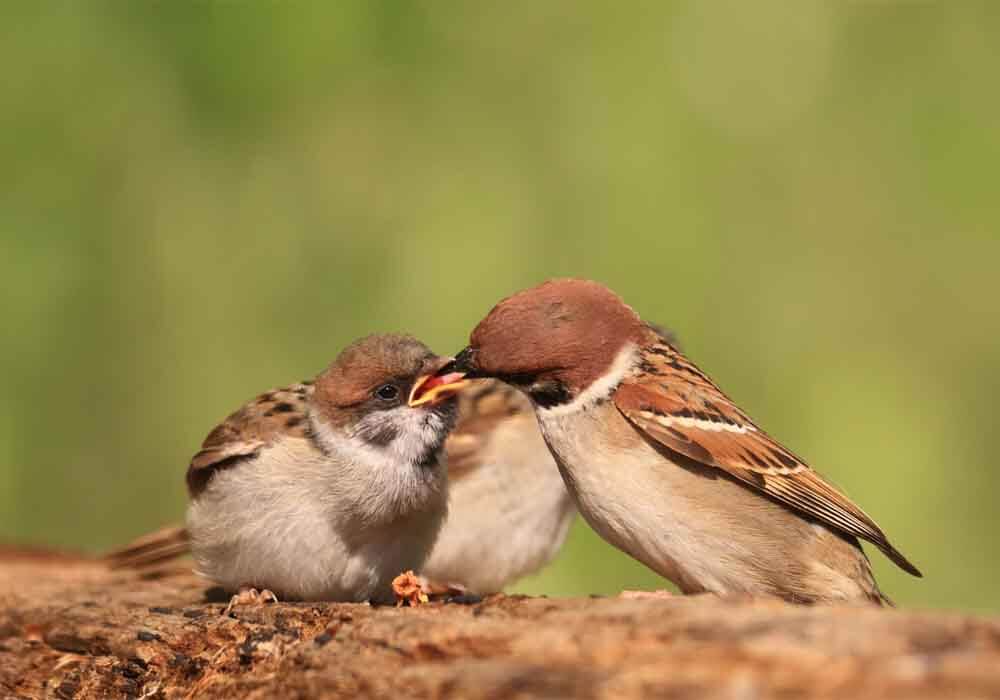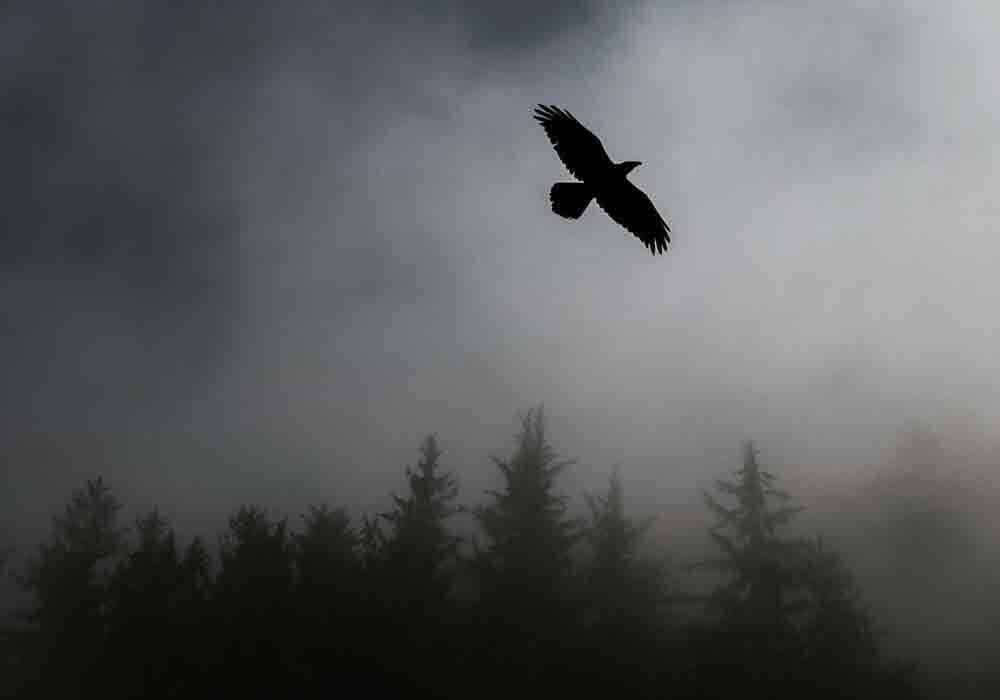Bird Nest Facts
The Fascinating Birds Nest Reveals It's Secrets
Every season, birds get busy building a nest that will be home to their eggs and their chicks. During their nesting season, the bird's nest becomes the prime focus for most birds. Because of their importance, several unique things about these bird nest facts will help you appreciate them better.
Bird nests are complicated, intricate structures made from various materials, including twigs, leaves, dirt, and grass. Birds make them by weaving them together and using unique, naturally sticky materials. Birds' nests can span entire trees or be the size of a thimble.
Bird nesting behaviors are diverse and fascinating—each bird follows its biological drive, but each manifests its nest in unique ways. This article explores a wide range of bird nest facts to help you understand the complexity of bird nests.

What Are Bird Nests Made Of?
Birds use various natural materials to make nests, including twigs, leaves, dirt, rocks, grass, and sand. A few bird species use unique substances like snakeskin and spider silk. In urban environments, some birds may use artificial materials like plastic bottle caps or pieces of cloth.
Here is a breakdown of what the most common birds use to make their nests:
- Cardinals. Cardinals gather and use pine needles, grass, leaves, twigs, and bark to make their nests.
- Crows. Crows select medium twigs to make the outside of their nests. They line their nest with down, fur, and weeds.
- Robins. Robins use dead grass and twigs to create a cup-shaped nest. In urban environments, robins also use paper.
- Sparrows. Sparrows will use coarse, rough materials like dried leaves, twigs, and straw to build the outside of their nests. They line their nests with feathers.
- Doves. Mourning doves make flimsy, sparse nests using twigs, pine needles, and grass blades. Some doves may build their nests in discarded milk cartons or other containers.
Another interesting fact is that some birds don’t use any material to build their nests. Birds like emus and ostriches lay their eggs on the ground. Other birds, like cuckoos, lay their eggs in other birds’ nests!
How Do Birds Make Nests?
Birds make nests by scouting for a suitable location, usually near a steady food and water source. They then gather the preferred materials and weave their nest together using a binding agent or weaving with their beaks. Some birds may even elaborately decorate their nests.
Let’s explore everything you need to know about how birds make nests.
1. Selecting a Location
Different species choose a range of different locations to build their nests. Most commonly, birds build their nests in trees. However, some may nest in the ground, while others choose roofs and air conditioning boxes as their nesting location. Seabirds make their nests on cliffs and bluffs.
2. Gathering the Materials
Next, birds begin to gather their materials. Typically, both male and female birds will gather materials together. Some birds, like crows, will have a flock of others helping them. Depending on their availability, birds can take up to a week to gather materials.
3. Weaving the Nest Together
Once they have sorted out their location and gathered the materials, birds begin the proper nest building. They start laying out the twigs, leaves, and other more rigid materials into a shape they like. They then use a binding material like spider webs, soft grasses, or even cloth to hold the nest together.
After building the base, some birds decorate their nests to attract mates or camouflage them. They use feathers, manure, moss, and grass as typical decorations. Some researchers have found that birds use materials like plastic to decorate their nests and establish social dominance.

Here's an article we've written answering a question many of us have had at one time or another...
What Will Happen If You Bother A Birds Nest?
Do Birds Use Dog or Cat Hair for Nests?
One of the lesser-known bird nest facts is that birds use hair to make their nests. They typically use dog or cat hair but may also use less common fur from wild animals. Using hair creates insulation, adds softness to their nest, and may help with camouflage.
Birds also like using fur as decoration because it dries quickly. This substance is beneficial during Spring when there are continuous showers.
How Long Does It Take a Bird To Make a Nest?
It can take birds from 2 days- 2 weeks to build their nest. Whether the bird has others to help, the availability of materials—and the complexity of the nest also influence building duration. More experienced birds can build their nests faster.
Here is how long it takes common birds to make their nests:
- Doves. Mourning doves build simple, flimsy nests, taking only 2-4 days.
- Cardinals. Cardinals take between 3-9 days to make their nest.
- Crows. Depending on the available materials and partner participation, crows typically take 7-14 days to build their nest.
- Robins. It takes robins less than 6 days to build their nest.
- Sparrows. Sparrows can take up to 2 weeks to build their nests.
Which Bird Makes the Most Beautiful Nest?
Bowerbirds and oven birds create some of the most beautiful bird nests, as do the southern masked weavers and European Penduline tits. These nests are sturdy and eye-catching—and sometimes include elaborate decoration.
Let's explore each bird's nest in more detail.
Bowerbirds
Bowerbird males build an impressive nest structure using twigs to create parallel walls of sticks that resemble a tent.
They then find various colorful blue materials to lay at the entrance to the nest and attract females. Many bowerbirds use artificial materials, including blue bottle caps, clothes pegs, and straws. Some natural materials they use include parrot feathers and flowers.
Once the male has finished decorating the entrance of his nest, he then paints it by chewing on vegetables and using his colored saliva to coat the nest.
If a bower female is impressed, she will move into the nest and lay her eggs. She may lay the eggs in the bower nest or build a simple nest just above the beautifully constructed bower.
Ovenbirds
Meanwhile, as their name suggests, oven birds make beautifully constructed nests that look like dutch ovens. Female oven birds build their nests using a loose combination of twigs and grass. They then cover this nest with mud and allow it to harden, resembling clay.
The ovenbird nest is exceptionally sturdy and can withstand the elements.
Southern Masked Weavers
Southern masked weavers make circular, intricate grass nests using a unique technique. First, the male selects a branch on a sturdy tree and removes all its leaves. Then he takes a blade of grass and begins weaving it around the tree.
He continues this process over five days, eventually creating a complex structure of grass and notes. He uses this to attract females to breed with any lay eggs in the nest.
European Penduline Tits
Finally, European Penduline tits make an elaborate, conical hanging nest that resembles fruits hanging on a tree. These tits work in pairs to build their nest. The male attaches fibers to the branch, and then the male and female add wool and animal hair to the nest.
These birds also add a 'fake' entrance to their nest to confuse and potentially trap their predators.
Birds nests come in all shapes and sizes, yet there are those that are truly unique. Check out this YouTube video highlighting the 15 most amazing bird nests out there!
What Bird Builds the Largest Nest?
The Malleefowl builds the largest nest, which can be 1 meter (3.2ft) high and a staggering 5 meters (16ft) across. This Australian bird is about the size of a chicken, and the male builds up the impressive nest by kicking up soil around a central bed of leaf litter.
Some other birds which build large nests include:
- Bald Eagles. Bald eagles take 1-3 months to build massive nests between 1.2-1.5 meters (3.93-4.92 feet) in diameter and up to 120 centimeters (47 inches) deep. They keep building on the nests and can add up to 3 feet (36 inches) of material to the nest each year.
- Sociable Weavers: Weavers are prodigious nest builders and create the largest communal nest that spans 7 meters (22ft) across and weighs almost a ton!
What Bird Builds the Smallest Nest?
Hummingbirds make the smallest nests on record. A vervain hummingbird has a nest about 2 centimeters (0.78 in) high. While the nest is small, the birds intricately weave the nest with soft grasses, animal hair, and feathers. They then bind it with spider webs, which expand as the chick grows.
Some other birds which have small nests include:
- Woodstars. Woodstars are South American birds building tiny nests about 6 centimeters (2.36 inches) high. The female only lays 2-3 eggs at a time, so they don't need much space.
- Goldcrests. Goldcrests are tiny birds and construct nests with a diameter of approximately 9 centimeters (3.54 inches). Females build nests out of grass and leaves.
- Weebills. Weebills nests can be about 10 centimeters (3.94 inches) long. These fit the nesting female, which is around 8 centimeters tall.
Bird Nest Facts...Final Thoughts
Birds' nests are incredible natural phenomena. From scouting a location to choosing the materials to the actual building of the nests, birds work incredibly hard to create a safe space to raise their young. Getting acquainted with a range of bird nest facts will help you appreciate their complexity even more.
Back To The TOP Of This Bird Nest Facts Page

About the Author...
Richard Worden, a dedicated bird lover for over 20 years, I love to share my in-depth knowledge and passion for birds. Read more About Me and my expertise in this field.
- We Know Birds HOME ›
- Bird Flight and Nesting Facts ›
- Bird Nest Facts



